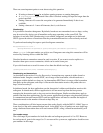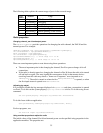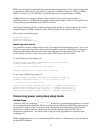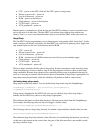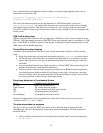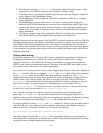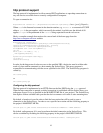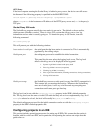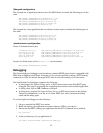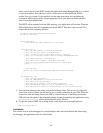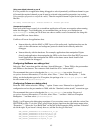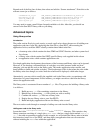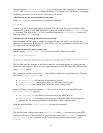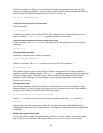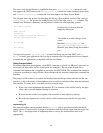42
HTTP Proxy
If the host computer running the Socket Proxy is behind a proxy server, the device can still access
the Internet if the following property is specified in the MANIFEST.MF:
com.sun.squawk.io.j2me.http.Protocol-HttpProxy: <proxyaddress>:<port>
where
proxyaddress
is the hostname or IP address of the HTTP proxy server and
port
is the proxy's
TCP port.
Socket Proxy GUI mode
The SocketProxy program actually has two modes it can run in. The default as shown earlier,
which presents a headless version. There is also a GUI version that allows you to view log
information and see what is actually going on. To launch the proxy in GUI mode, issue the
following command
ant socket-proxy-gui
This will present you with the following window:
base station's serial port the serial port that the base station is connected to. This is automatically
populated by the calling scripts.
Radiogram port the radiogram port used to establish the initial connection.
This panel lets the user select the logging level to use. The log level
affects which logs are to be displayed in the log panel.
1. System: log all that is related to the proxy itself
2. Error: log all that is an error (exceptions)
3. Warning: log all that is a warning
4. Info: log all extra information (incoming connections, closing connections)
5. I/O: log all I/O activities
Radio port usage the SocketProxy reserves a radio port for every Sun SPOT connected to it.
This counter lets you monitor that activity. Whenever the SocketProxy
runs out of radio ports, it will say so in here and stop accepting new
connections until some ports get freed up.
The log level can be set with the
socketproxy.loglevel
property in the SDK's default.properties
file. The log levels are the same as in the GUI mode but they are set in a complementary way. So if
warning
is selected as a level, the level will actually be
system
,
error
and
warning
.
The default radiogram port used for the initial connection can be set with the
socketproxy.initport
property in the SDK's default.properties file.
Configuring projects in an IDE
This section includes general-purpose notes for setting up all IDEs. We assume that the reader is
familiar with his or her own IDE, and in particular, incorporating the various ant scripts that this
guide refers to.



